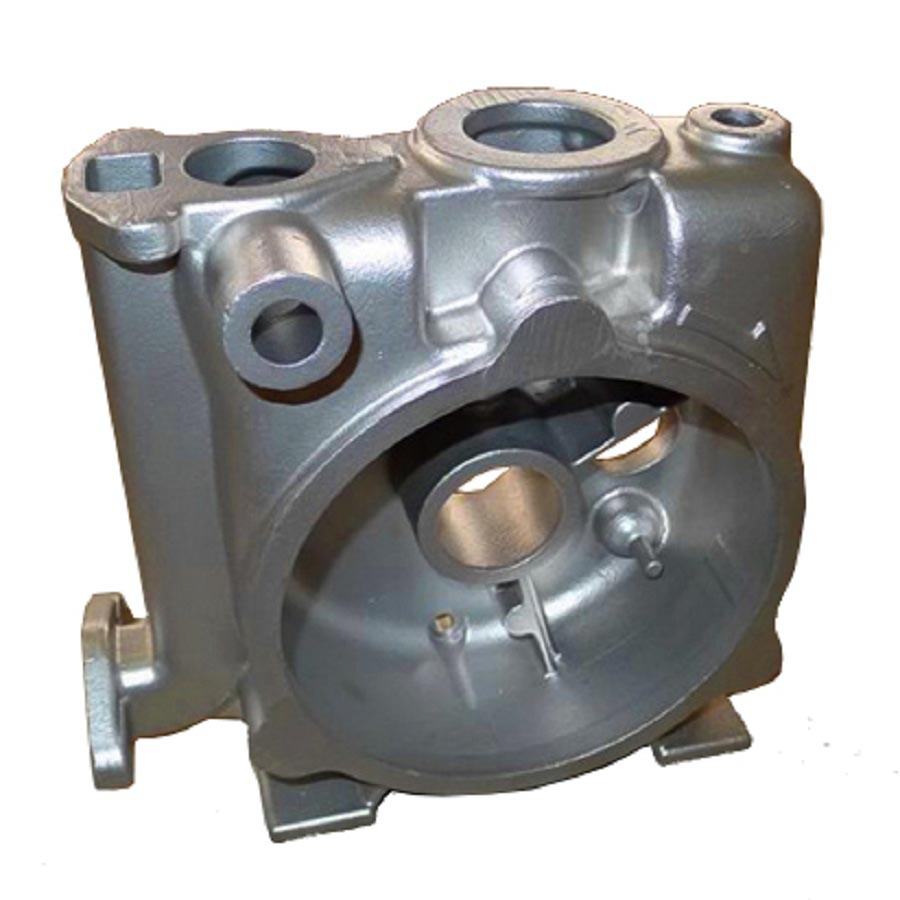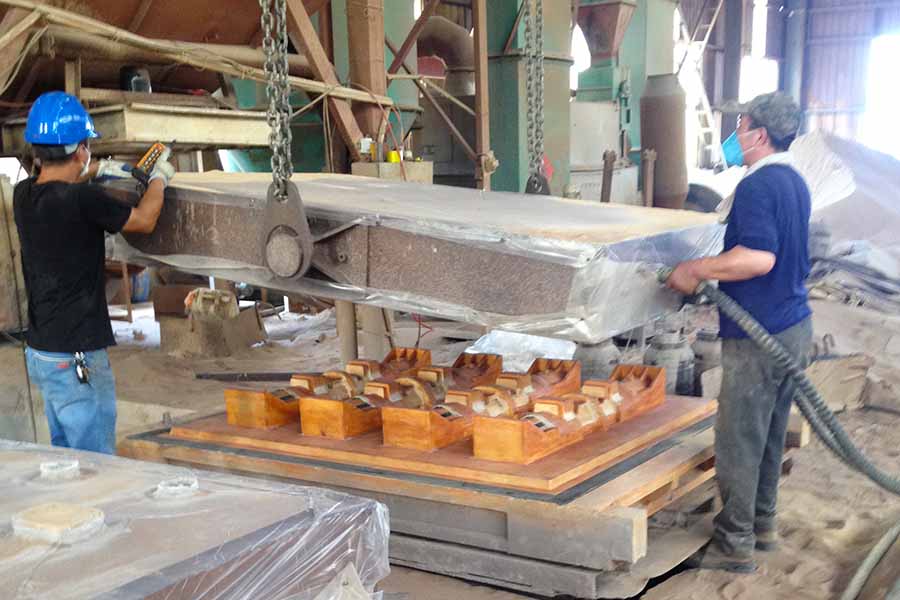
Steel Vacuum Casting Parts
Material: Steel Alloys, Carbon Steel, Stainless Steel Process: Vacuum Casting + Machining Weight: 18 kg Application: Housing
Steel Vacuum Casting Parts with OEM and Engineering Services.
Steel Vacuum Casting Parts with OEM and Engineering Services.
Vacuum castings are the metal parts that are produced by the vacuum casting method. They are different than typical investment castings due to the technique that is used to create these metal parts. The process begins by placing a two-piece mold in a vacuum chamber. The vacuum then draws the molten metal into the mold. Finally, the casting is solidified in an oven and the mold is removed in order to release the final product.
During vacuum casting, because the surface of the model is covered with plastic film, there is no need to vibrate or knock when pull the mold. The suction and negative pressure make the molding sand compact, and the hardness of the sand mold is high and uniform. Under the heat of molten metal, the cavity is not easy to deform. Moreover, the existence of negative pressure is conducive to the full filling of molten metal into the model. The surface roughness of V process castings can reach Ra = 25 ~ 2.5μm. The dimensional tolerance level of castings can reach CT5 ~ CT7. The appearance quality of negative pressure castings is good, and the internal quality is reliable.
If you have a project that requires high-quality vacuum investment castings, we can provide them for you. Here at RMC, we utilize both gravity fed and vacuum casting methods to produce metal components that range in weight from a few kilograms up to hundreds of kilograms. Our countless years of experience in both of these methods guarantee that we can supply superior or near net shape parts that require little or no finish work. Get the investment castings that you need, delivered on time and at a competitive price, by contacting us today!
▶ Vacuum Casting Materials:
• Carbon Steel: Low Carbon Steel, Medium Carbon Steel and High Carbon Steel from AISI 1020 to AISI 1060.• Cast Steel Alloys: ZG20SiMn, ZG30SiMn, ZG30CrMo, ZG35CrMo, ZG35SiMn, ZG35CrMnSi, ZG40Mn, ZG40Cr, ZG42Cr, ZG42CrMo...etc on request.
• Stainless Steel: AISI 304, AISI 304L, AISI 316, AISI 316L and other stainless steel grade.
• Brass & Copper.
• Other Materials and Standards on request
▶ V Process Casting Capacities:
• Max Size: 1,000 mm × 800 mm × 500 mm• Weight Range: 0.5 kg - 100 kg
• Annual Capacity: 2,000 tons
• Tolerances: On Request.
▶ Inspecting V-Process Casting Components:
• Spectrographic and manual quantitative analysis• Metallographic analysis
• Brinell, Rockwell and Vickers hardness inspection
• Mechanical property analysis
• Low and normal temperature impact testing
• Cleanliness inspection
• UT, MT and RT inspection
▶ Vacuum Casting Procedures:
• The pattern is covered tightly by a thin sheet of plastic.• A flask is placed over the coated pattern and is filled with dry sand without bind.
• The second flak is then placed on top of the sand, and a vacuum draws the sand so that the pattern can be tight and withdrawn. Both halves of the mold are made and assembled in this way.
• During pouring, the mold remains under a vacuum but the casting cavity does not.
• When the metal has solidified, the vacuum is turned off and the sand falls away, releasing the casting.
• Vacuum molding produces casting with high-quality detail and dimensional accuracy.
• It is especially well suited for large, relatively flat castings.
▶ Post-Casting Process
• Deburring & Cleaning• Shot Blasting / Sand Peening
• Heat Treatment: Normalization, Quench, Tempering, Carburization, Nitriding
• Surface Treatment: Passivation, Andonizing, Electroplating, Hot Zinc Plating, Zinc Plating, Nickel Plating, Polishing, Electro-Polishing, Painting, GeoMet, Zintec.
• Machining: Turning, Milling, Lathing, Drilling, Honing, Grinding.
▶ Why You Choose RMC for V (Vacuum) Process Casting Components?
• Easy recovery of the sand because the binders are not used• Sand does not require mechanical reconditioning.
• Good air permeability because there is no water is mixed with sand, therefore less casting defects.
• More suitable for large scale castings
• Cost effective, especially for large castings.
▶ General Commerial Terms
• Main workflow: Inquiry & Quotation → Confirming Details / Cost Reduction Proposals → Tooling Development → Trial Casting → Samples Approval → Trial Order → Mass Production → Continuous Order Proceeding• Leadtime: Estimatedly 15-25 days for tooling development and estimatedly 20 days for mass production.
• Payment Terms: To be negotiated.
• Payment methods: T/T, L/C, West Union, Paypal.
 русский
русский




